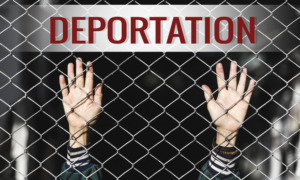Florida is about to launch the first statewide test of a flexible system of foster care spending that the Bush administration would like to see every state adopt.
The federal government has granted Florida’s Department of Children and Families (DCF) a waiver to spend Title IV-E funds on efforts to keep kids out of foster care, rather than spending it only on youth who have been removed from their homes.
“It’s the first time we will have the flexibility to shift our focus onto prevention and start looking outside the box on how to keep families together,” says Alan Abramowitz, the DCF district administrator for Volusia and Flagler counties.
Normally, funds from Title IV-E of the Social Security Act can be spent only on services and administrative costs for youth in foster care. Section 1130 of the Act allows waivers to “test innovative approaches to child welfare service delivery and financing,” says Wade Horn, assistant secretary for children and families at the U.S. Department of Health and Human Services (HHS).
The waiver launches a five-year trial in which community-based agencies can spend the money for prevention services, reunification, family-based intervention and adoption services. The state received $140 million in IV-E funds last year.
Other states, including Michigan, Virginia and Arizona have received waivers for specific counties or aspects of their child welfare systems.
“We believe flexible funding is a good thing,” Horn says. “States should be able to operate under a flexible set of rules, so we’re using the existing waiver authority we have to allow Florida to test that out.”
Shift to In-Home Care
Some child welfare leaders say the experiment is sorely needed.
“Large numbers of children are needlessly torn from everyone loving and familiar because the state won’t pay for basic help to keep families together,” Richard Wexler, executive director of the National Coalition for Child Protection Reform, said by e-mail.
“The waiver allows the state to transfer huge amounts of money into funding the safe, proven alternatives their families need.”
The change will have an immediate and major impact, say administrators at several of Florida’s “lead” agencies – community-based organizations that, under Florida’s privatized child welfare system, oversee IV-E expenditures at the district level.
“We’ve made a major shift away from out-of-home care,” says Steven Murphy, CEO of Partnership for Strong Families, the lead agency in the Gainesville area. “There are many more kids needing in-home services.”
But as the district has used more family preservation and adoption services to lower the number of kids in foster care, fewer youth are left eligible to be served by IV-E funds.
“Most of us end the year with budget surpluses in IV-E,” Murphy says of the state’s lead agencies. “And we can’t spend it, because it can only be spent for out-of-home care.”
The Child Welfare League of America offered lukewarm support for the experiment.
“The states seek to conduct worthy efforts to meet the needs of children, and we commend them for their innovative approaches,” Shay Bilchik, CEO of the Child Welfare League of America, said in a prepared statement. But “those seeking serious solutions know full well that providing the services needed to treat and reduce child abuse and neglect will take more than flexibility.”
Suspicions
Skeptics say the theory is good, but the agency in question – Florida’s much-maligned DCF – can’t be trusted to carry it out well.
“If this will help in situations where money is the only thing keeping [families] from reunification, it could be fabulous,” says Michelle Long, director of community resources for Hillsborough Kids, the lead agency for Hillsborough County. “But none of us was invited to know about the changes. They need to bring the advocates in on things like this.”
Florida agreed to the waiver on March 31, the day the federal provision expired that allows the waivers.
“The approach of using flexible money for services is appropriate, but we’re extremely concerned that the use of the waiver lacked a full public airing,” says Howard Talenfeld, a board member for Florida’s Children First. He says more transparency was needed because of the state’s recent push for Medicaid reform, which “seems to be designed to save money and not foster children.”
Abramowitz, the DCF district administrator, dismisses the suspicion. “Prevention is a lot less expensive than foster care. And it’s better for children,” he says.
“Decisions on spending will be made by the community lead agencies. That trumps this idea that the administration has something up its sleeve.”
The waiver carries financial trade-offs. Florida was required to cap the growth of child welfare expenditures at 3 percent a year. Extra costs will be absorbed by the state.
But Murphy, of Partnership for Strong Families, notes that the allowable funding increase is twice as much as Florida’s IV-E expenditures have increased in total over the past five years.
Wexler urges skeptics to give the idea a chance. “Everybody in Florida feels burned by DCF,” he says. “But don’t punish children because for once they did the right thing for them.”
California reached a similar deal with ACF last month that will apply to 12 counties of its choosing. If Los Angeles is one of them, it may provide a larger testing ground than Florida’s entire system.
Contact: DCF (850) 487-1111, www.dcf.state.fl.us.































